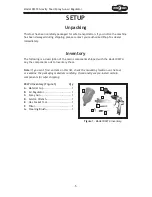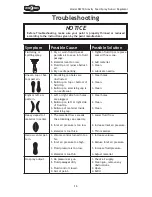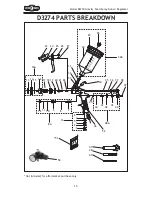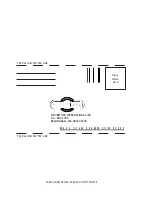
Model D3274 Gravity Feed Spray Gun w/Regulator
-8-
7.
Adjust the fluid control knob (
Figure
3
), to start with a low volume of
material and keep the atomization as
low as possible. You will need to use
a combination of fluid control, inlet
air pressure, air flow control and
stroke speed to achieve the results
you want. Spray so the material wets
out nicely without running or sagging.
8.
Use the pattern control knob (
Figure
3
), to adjust the spray fan to your
desired pattern.
9.
Keep the gun tip perpendicular to
the ground, parallel to the spraying
surface, and 6-8" from the work (as
shown in
Figure 4
) when spraying.
Do not allow your wrist to bend. This
will cause the gun to arc across the
surface and distribute the material
unevenly, possibly creating sags and
dry spots.
NOTICE
Tipping spray gun may cause material
to spill out of the cup. Always hold
the spray gun perpendicular to the
ground to avoid potential spills and
gravity feed problems.
+
-
Figure 4.
Spray technique.
10.
Begin spraying 2-3 inches before the
work and continue to the end of the
work, as shown in
Figure 5
. Continue
the motion for a few inches past
the work until you are ready for the
return stroke.
11.
Overlap each stroke by 50% while
maintaining an even speed. This will
ensure even coverage as shown in
Figure 6
. Overlapping less than 50%,
as shown in the figure to the right,
may lead to missed spots or streaky
results.
12.
Spray stroke should have even
consistency and parallel edges. If it
doesn't, refer to
Troubleshooting
on
Page 12
.
+
-
Figure 6.
Overlap technique.
No
Yes
Figure 5.
Spray positions.
Ldg`e^ZXZ
6
6
7
7
8
A
B
C
A–Off
B–Air
C–Spray
Note:
Trigger position B (
Figure
5
) introduces air to the paint gun,
so that position C (spray), is dust,
spatter, and cloud free.






































